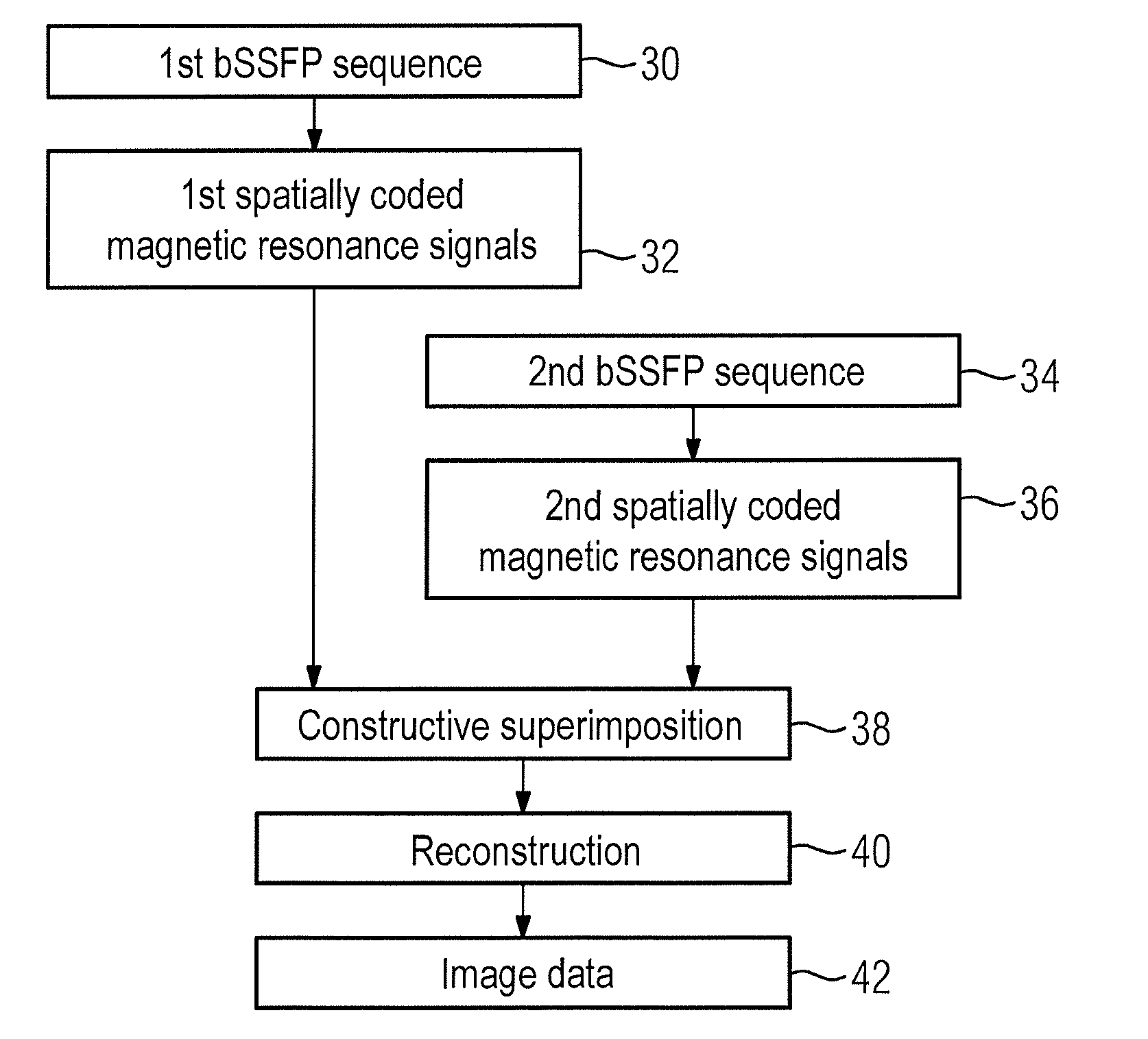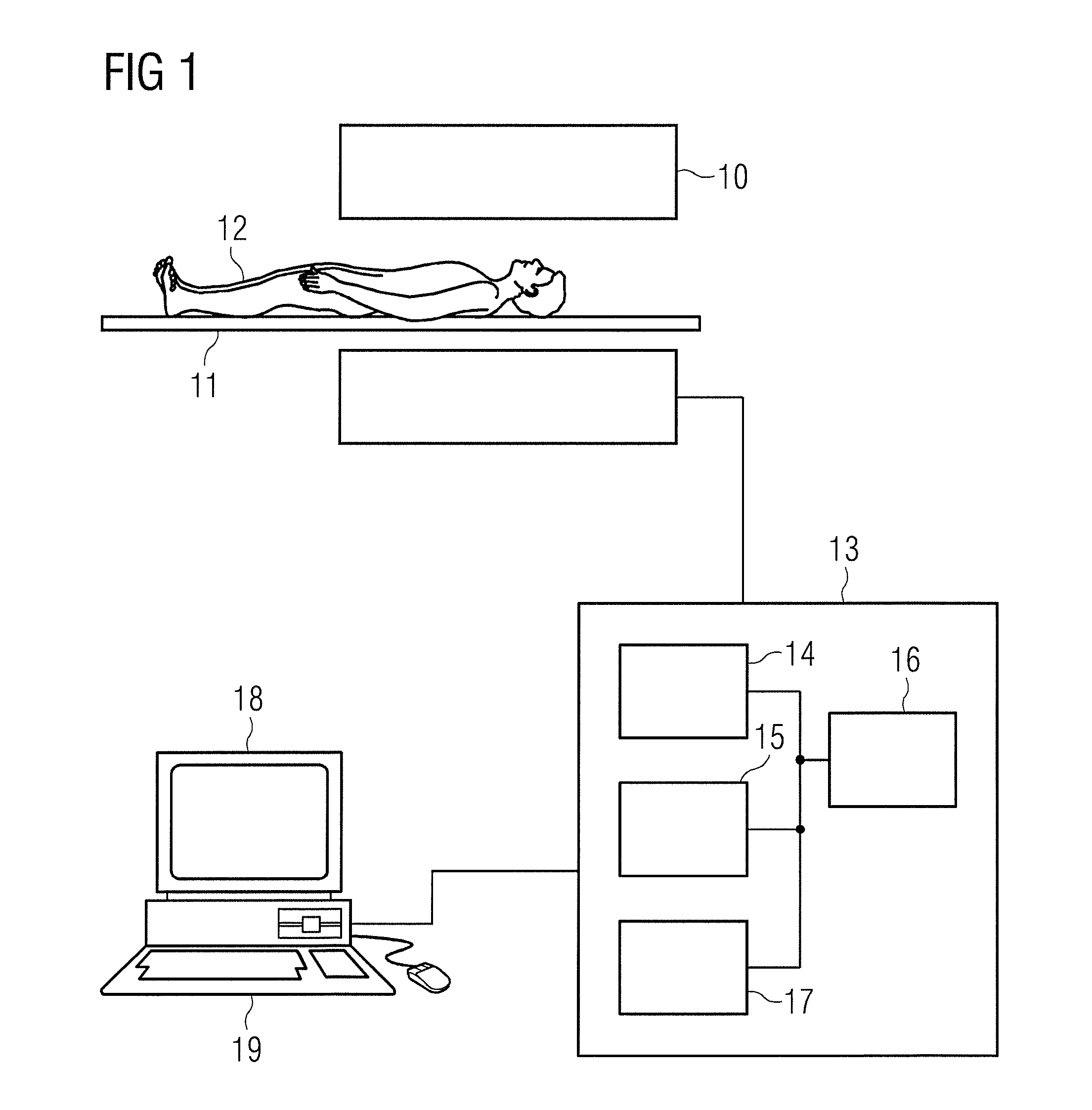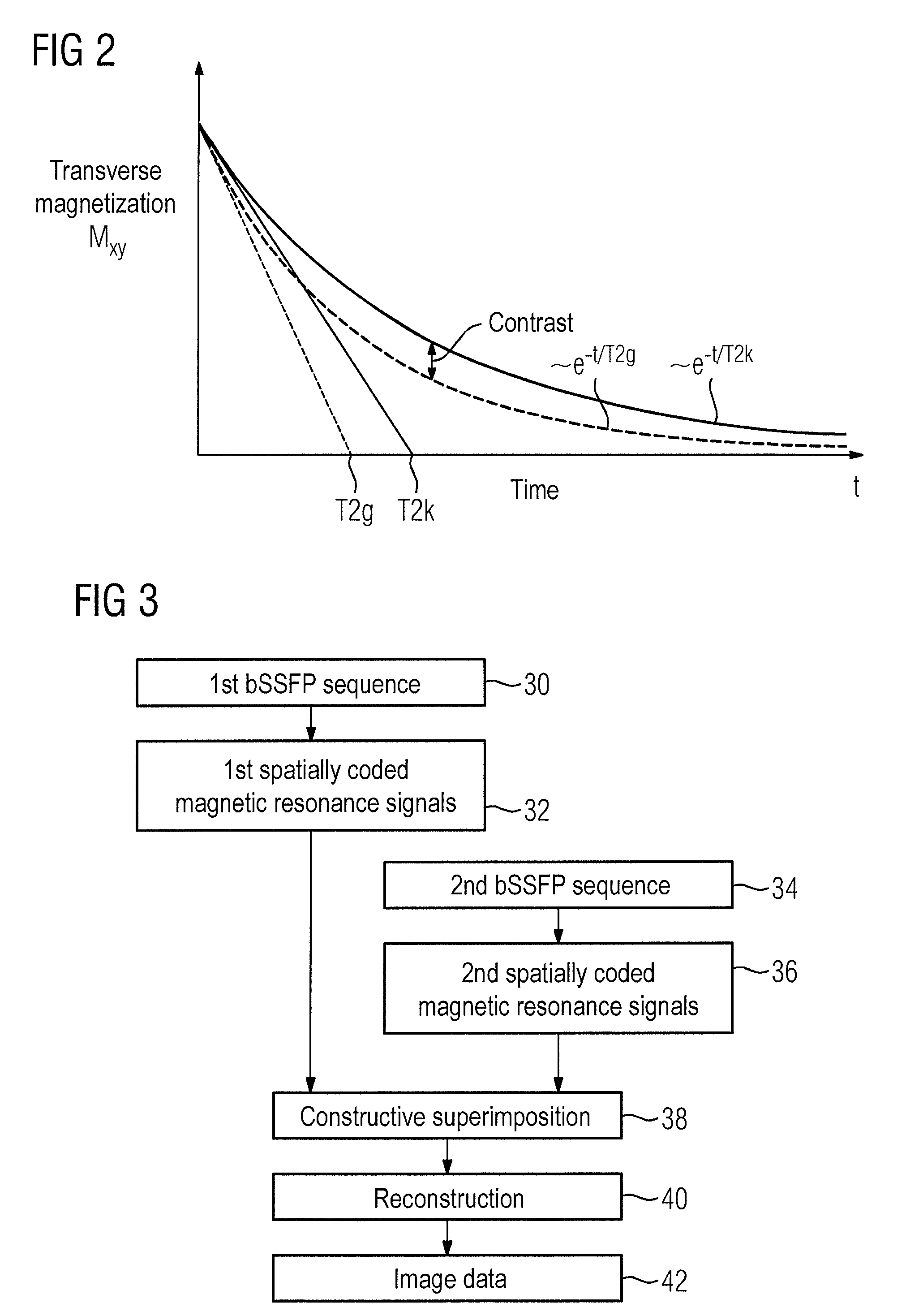Method and device to generate spatially resolved quasi-t2-weighted magnetic resonance signals
a magnetic resonance signal and spatial resolution technology, applied in the field of spatial resolution quasi-t2weighted magnetic resonance signal generation, can solve the problems of limited application of this hybrid sequence, high patient sar exposure, and relatively susceptible movement of the tse sequence, so as to accelerate the acquisition of signals (which is already inherently fast)
- Summary
- Abstract
- Description
- Claims
- Application Information
AI Technical Summary
Benefits of technology
Problems solved by technology
Method used
Image
Examples
Embodiment Construction
[0034]In FIG. 1 a magnetic resonance apparatus is schematically shown with which spatially resolved, quasi-T2-weighted magnetic resonance signals of a moving subject (of the heart, for example) can be generated. The magnetic resonance apparatus has a magnet10 to generate a polarization field B0, wherein an examined person 12 borne on a bed 11 is moved into the center of the magnet 10 in order to acquire the quasi-T2-weighted magnetic resonance signals there. The magnetization generated by the polarization field B0 can be deflected by radiating radio-frequency pulse series and switching magnetic field gradients, wherein magnetic resonance signals are induced in reception coils (not shown). The general operation for generating magnetic resonance signals with various acquisition sequences is known to those skilled in the art, so a detailed explanation of the individual apparatus components is not necessary herein. The magnetic resonance apparatus furthermore has a central control unit ...
PUM
 Login to View More
Login to View More Abstract
Description
Claims
Application Information
 Login to View More
Login to View More - R&D
- Intellectual Property
- Life Sciences
- Materials
- Tech Scout
- Unparalleled Data Quality
- Higher Quality Content
- 60% Fewer Hallucinations
Browse by: Latest US Patents, China's latest patents, Technical Efficacy Thesaurus, Application Domain, Technology Topic, Popular Technical Reports.
© 2025 PatSnap. All rights reserved.Legal|Privacy policy|Modern Slavery Act Transparency Statement|Sitemap|About US| Contact US: help@patsnap.com



